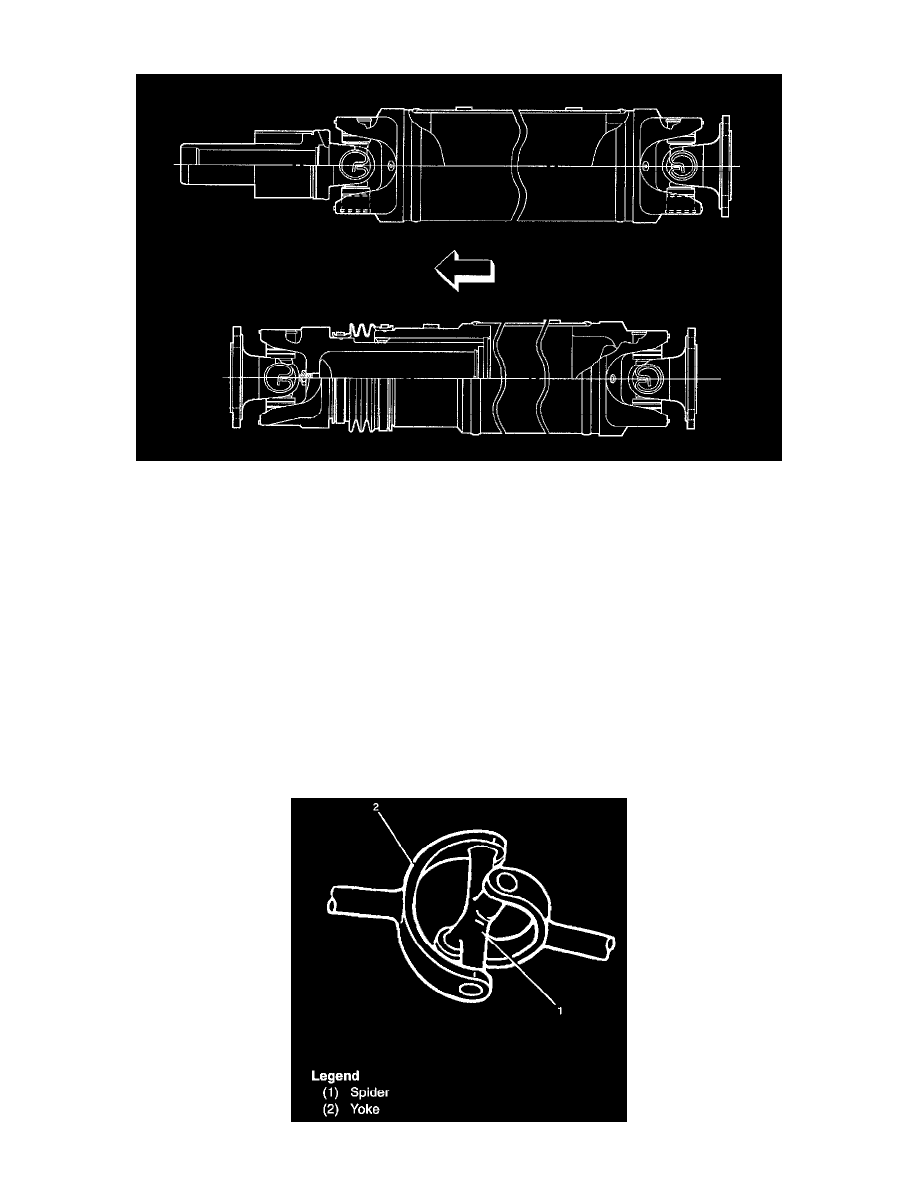Rodeo S 2WD L4-2.2L (1999)

Drive/Propeller Shaft: Description and Operation
GENERAL DESCRIPTION
PROPELLER SHAFT
Torque is transmitted from the transmission to the rear axle through one propeller shaft and universal joint assemblies. All propeller shafts are the
balanced tubular type. A splined slip joint is provided in some drivelines.
-
Since the propeller shaft is total balanced carefully, welding or any other modification are not permitted.
-
Alignment marks should be applied to each propeller shaft before removal.
-
Be sure vehicle is stopped, engine is not running, brake is secured and vehicle is secured to prevent injury.
-
Be careful not to grip the propeller shaft tube too tightly in the vise as this will be cause deformation.
PHASING
The propeller shaft is designed and built with the yoke lugs (ears) in line with each other. This design produces the smoothest running shaft possible,
called phasing. Vibration can be caused by an out-of-phase propeller shaft. The propeller shaft will absorb vibrations from speeding up and slowing
down each time the universal joint goes around. This vibration would be the same as a person snapping a rope and watching the "wave" reaction flow
to the end. A propeller shaft working in phase would be similar to two persons snapping a rope at the same time, and watching the "waves" meet and
cancel each other out. In comparison, this would be the same as the universal joints on a propeller shaft. A total cancellation of vibration produces a
smooth flow of power in the driveline. It is very important to apply a reference mark to the propeller shaft before removal, to assure installation
alignment.
